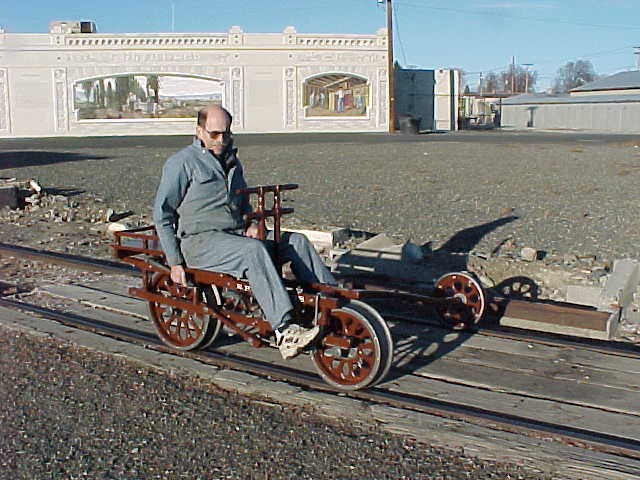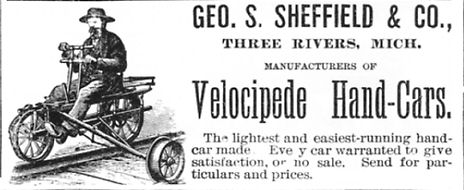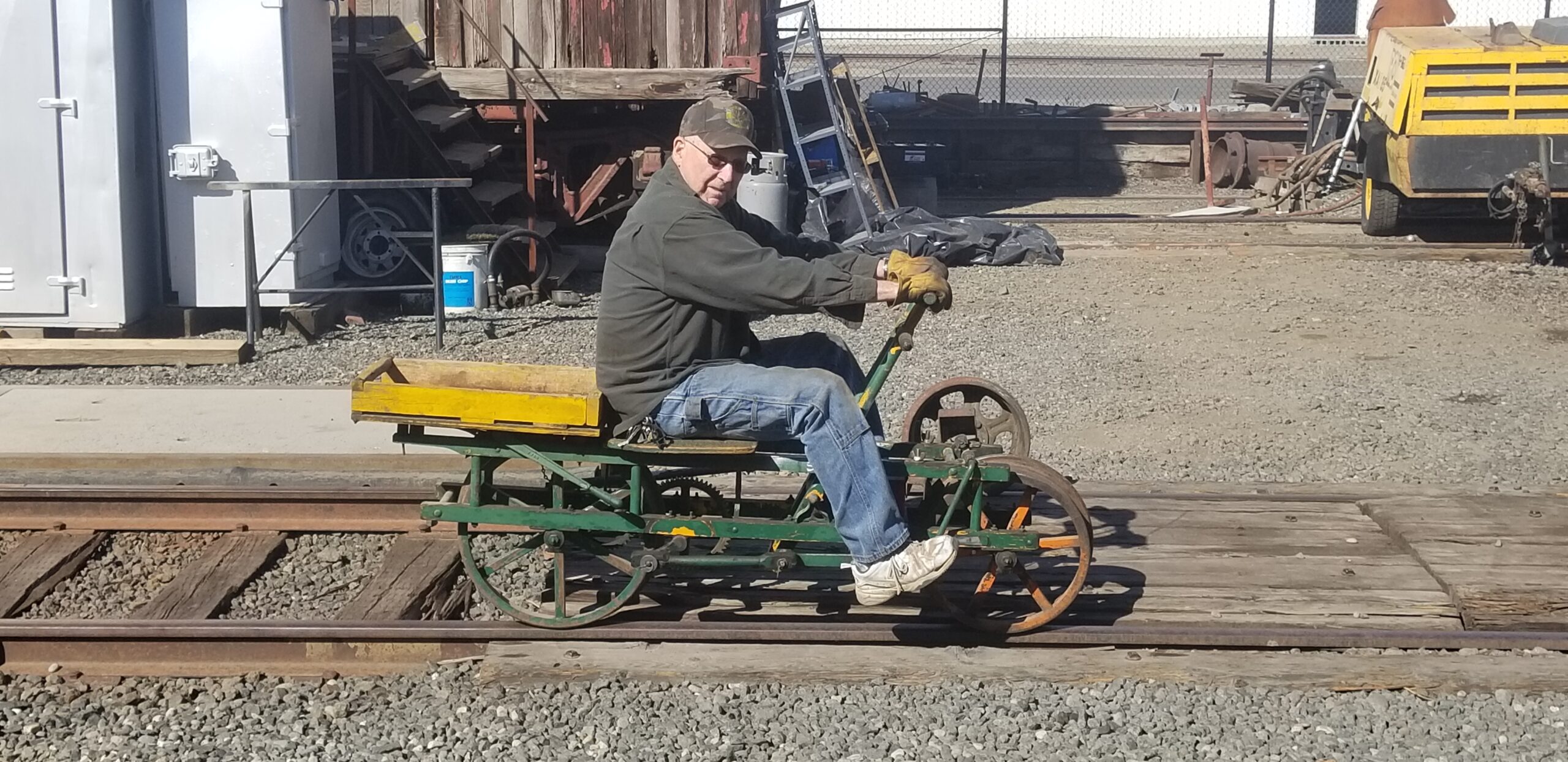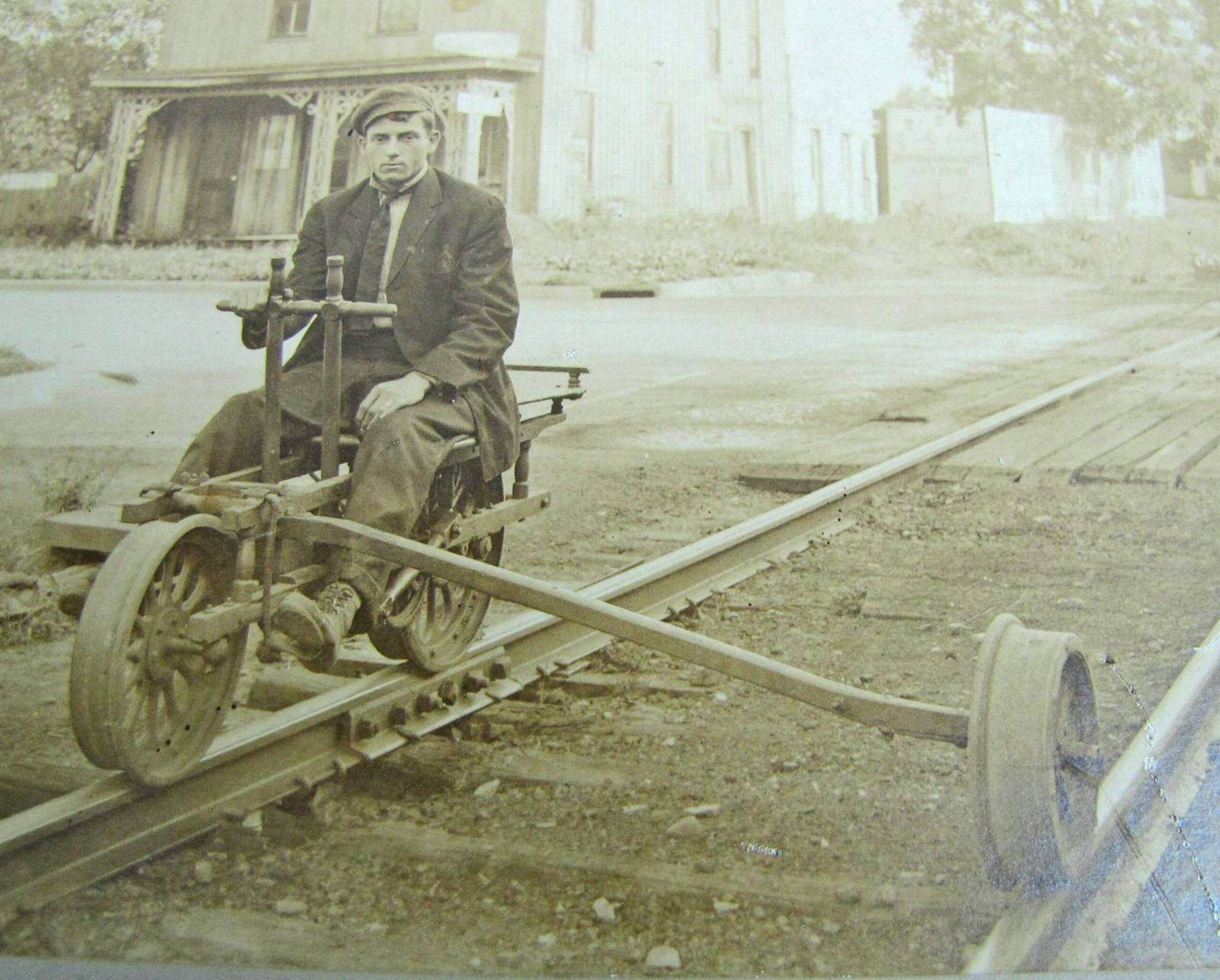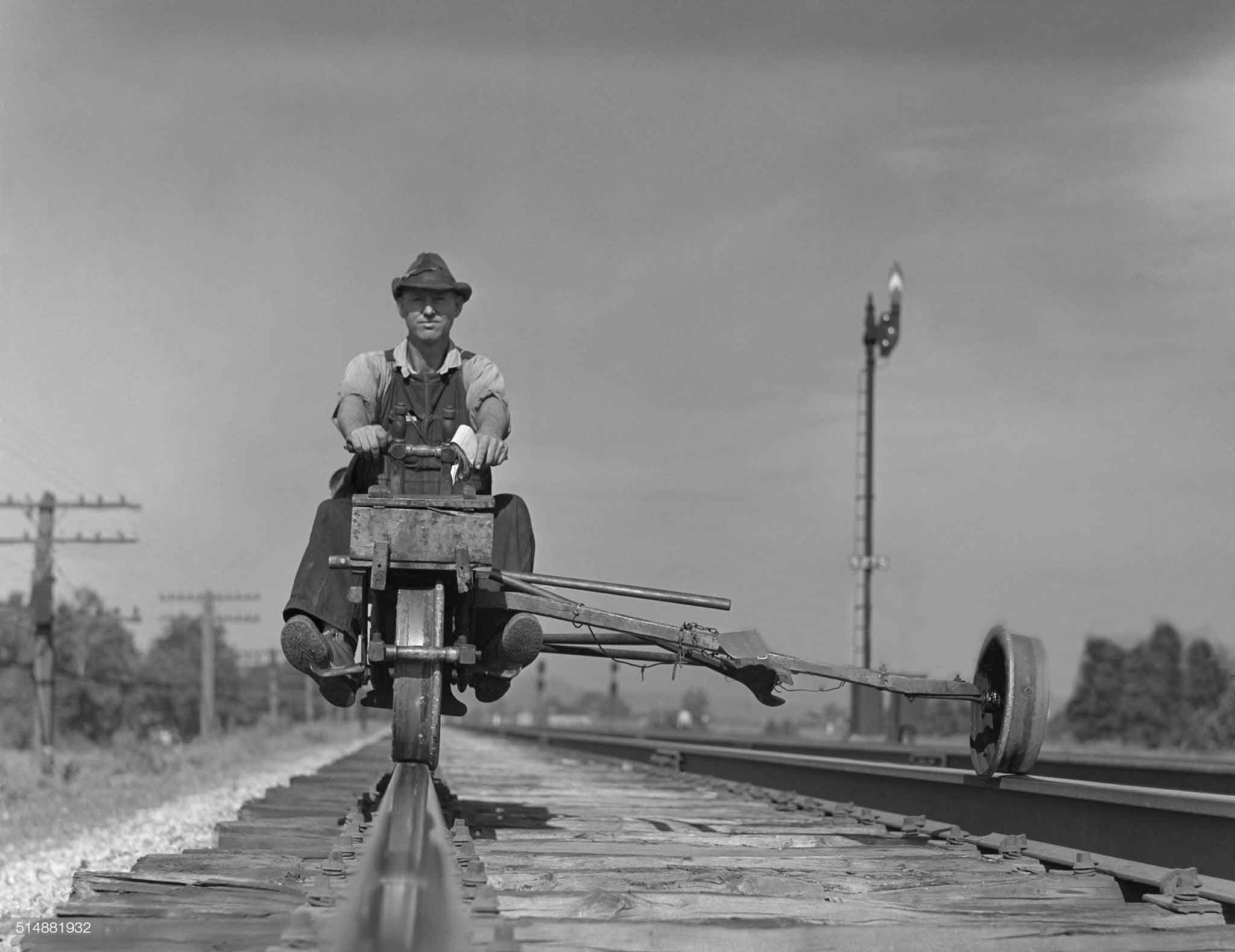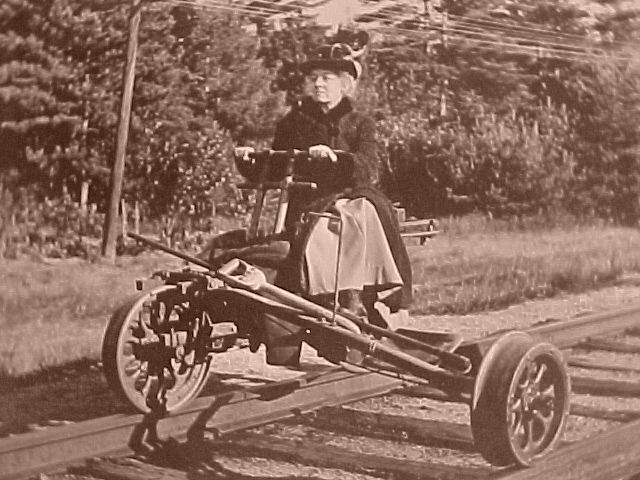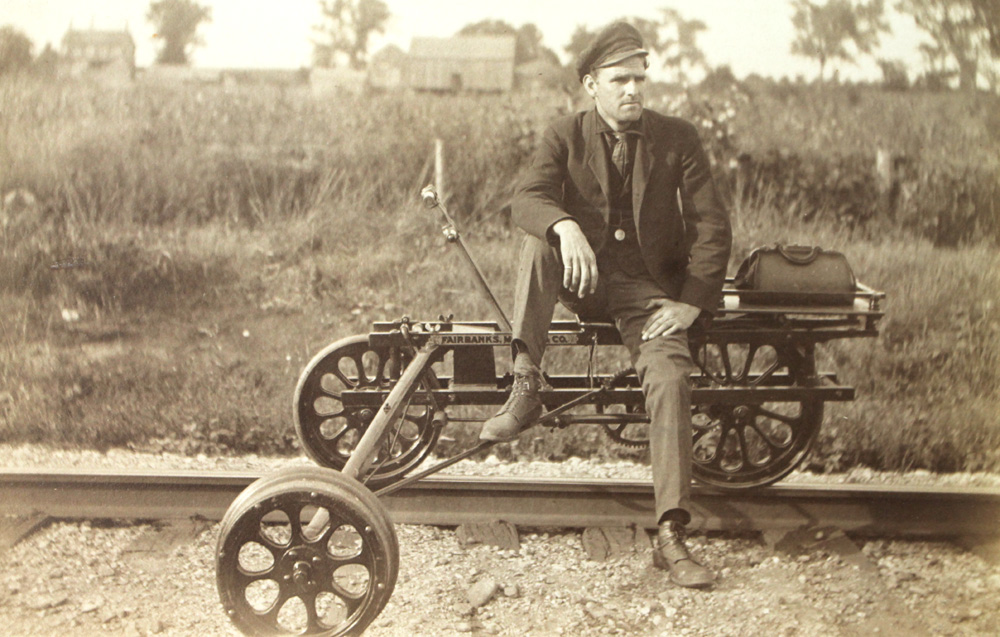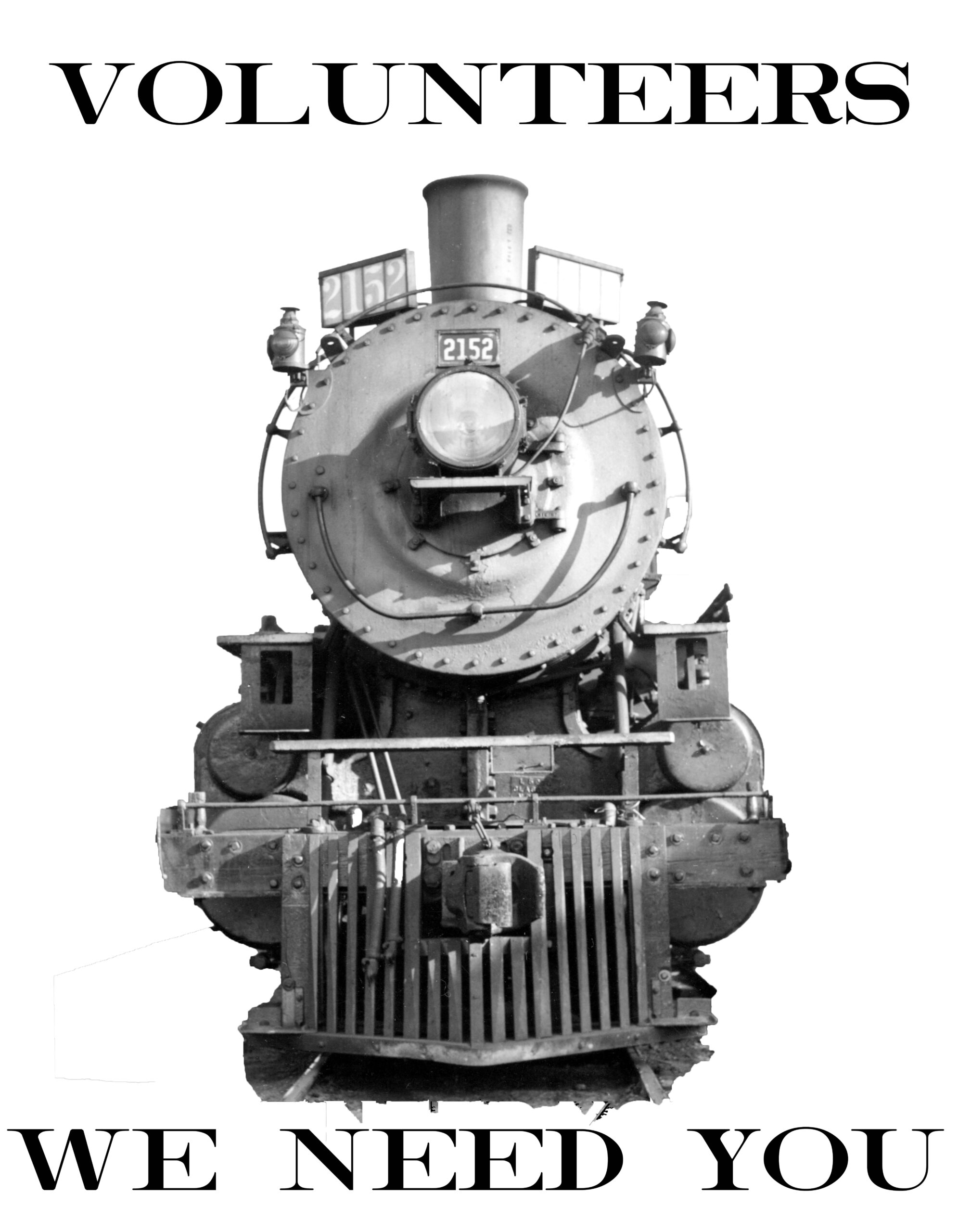VELOCIPEDE
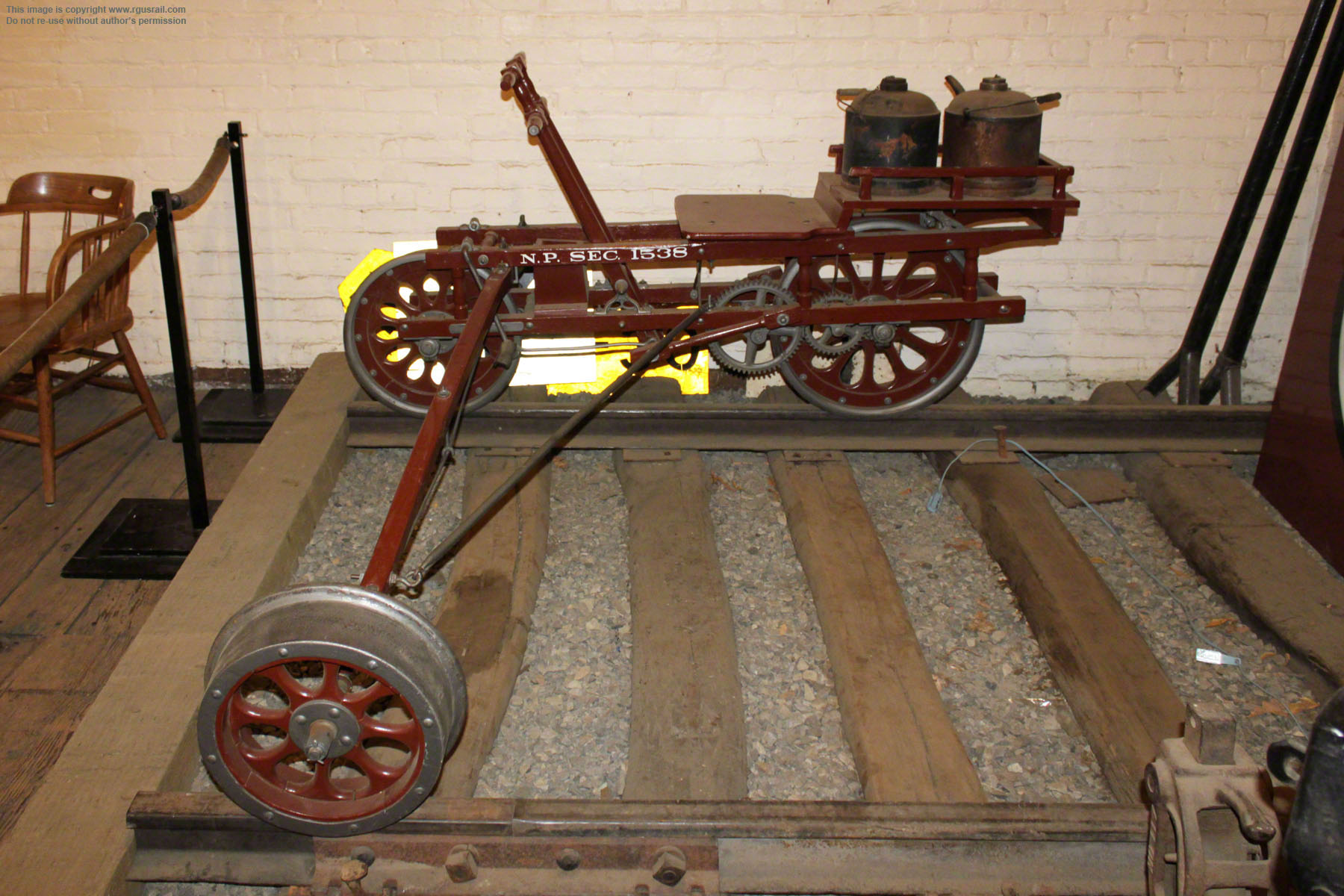
Our velocipede was acquired by the museum in 1999. Its history is unknown other than it had been used as a yard ornament in the Puget Sound area for approximately 30 years. As a result, there was extensive dry rot, particularly of the wooden spokes, none of which were usable. All areas where bolts penetrated the wood had dry rot such that most bolt holes were markedly enlarged from original. In several places the metal wheels had rusted through. All of the wooden spokes had to be reconstructed and are identical to the originals. In other areas, dry rot was ground out, and ash filler plugs fitted and epoxied in place. The wheel defects were filled with weld and ground to original shape. Lettering copies that seen on another NP velocipede.
